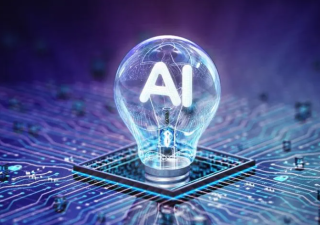Innovation in technical principles and a surge of global achievements
Optical quantum computing, based on quantum mechanics and using photons as information carriers, derives its core advantages from the natural properties of photons: high speed, strong coherence, and susceptibility to environmental interference. This allows it to transcend the computational limitations of traditional computers' binary bits and achieve efficient parallel computing. By generating entangled photon pairs through nonlinear optical effects and then precisely manipulating them with linear optical elements, optical quantum computing can perform complex computations, providing powerful computing power to solve scientific challenges and achieve practical applications.

Breaking the ceiling of computing power
Traditional computers perform operations on binary bits, each of which can only be 0 or 1. Quantum computers, on the other hand, utilize quantum bits (qubits), which can exist in a superposition of both 0 and 1 simultaneously. This characteristic enables quantum computers to demonstrate exponential computational advantages when tackling certain complex problems.
For example, when simulating molecular structures, material properties, or climate systems, researchers often face massive amounts of data and complex relationships between variables. Conventional computers often take a long time to process these problems, or even fail to complete them. Quantum computers, like a sharp key, can quickly unlock these "black boxes," allowing researchers to obtain results more quickly and advance research.
It's like searching for treasure in a dense forest. Conventional computers grope their way along small paths, while quantum computers, like a bird's-eye view, can quickly locate the target.
Accelerating Breakthroughs in Basic Science
Basic scientific research often involves exploring the microscopic world, such as in fields like particle physics, cosmology, and materials science. These studies often require simulating and predicting the behavior of extremely small particles, which inherently obey the laws of quantum mechanics.
Quantum computers are naturally suited to simulating quantum systems, acting like a "telescope for the microscopic world," helping scientists more clearly observe previously elusive phenomena. For example, scientists can use quantum computers to simulate the movement of electrons in materials, thereby designing more efficient new materials or studying the behavior of particles in the early universe, providing new clues to understanding the origins of the universe.
Furthermore, it may help scientists discover new physical laws and even promote the renewal of scientific theories. Just as telescopes allowed humans to see the details of the starry sky for the first time, and microscopes allowed us to discover the existence of cells, quantum computers will also become the key to unlocking new insights into the microscopic world.
Scientific research is never a one-time effort; it relies on extensive experiments, modeling, and verification. Traditionally, these processes are often lengthy, costly, and inefficient. The introduction of quantum computers has the potential to change this situation.
- Innovation in Experimental Simulation
In many fields, real-world experiments are often limited by equipment, environmental factors, and safety considerations. For example, experiments on high-temperature superconducting materials may require extremely low temperatures, while nuclear fusion research requires expensive equipment. Quantum computers can simulate these experimental processes in a virtual environment, saving resources and enabling the prediction of experimental results in advance, providing guidance for practical implementation.
- A Leap in Data Analysis
Scientific research is inseparable from data analysis, especially when faced with massive amounts of data in fields like astronomy, biology, and climate science. Traditional computing methods often struggle to keep up. Quantum computers can perform in-depth analysis of large amounts of data in record time, helping researchers more quickly identify patterns and discover patterns, thereby improving research efficiency.
- A Catalyst for Interdisciplinary Integration
The widespread application of quantum computers will also promote the integration of different disciplines. For example, the integration of biology and physics, and the intersection of chemistry and computer science, will become even closer with the support of quantum computing. Scientific research will no longer be isolated fields, but rather an interconnected network. The flow of knowledge will be more efficient, and the sparks of innovation will continue to emerge.

Using a New Paradigm for Scientific Research
With the development of quantum computers, the way scientific research is conducted will undergo fundamental changes. In the past, scientific research relied more on individual wisdom and experience, but in the future, it will rely more on collaboration and systematization.
- From "Experience-Driven" to "Model-Driven"
In traditional scientific research, many discoveries come from scientists' intuition and accumulated experience. With the power of quantum computing, scientific research will increasingly rely on precise models and simulations. Scientists can use computers to build virtual laboratories, conducting a "prediction-verification-correction" cycle, thereby accelerating the accumulation of knowledge.
- From "local exploration" to "global insight"
Scientific research is often local and episodic, but quantum computers offer a more comprehensive perspective. They can search across a wider range of variable spaces, helping scientists discover previously overlooked connections and patterns. This is like moving from looking at a photograph to watching a movie, from static to dynamic, from the local to the global.
- From "human-led" to "human-machine collaboration"
Future scientific research will no longer be a solitary effort by scientists, but rather a deep collaboration between humans and intelligent systems. Quantum computers will become scientists' "super assistants," handling tedious computational and simulation tasks while scientists focus on asking questions, designing models, and interpreting results. This collaborative model will greatly enhance the efficiency and depth of scientific research.







